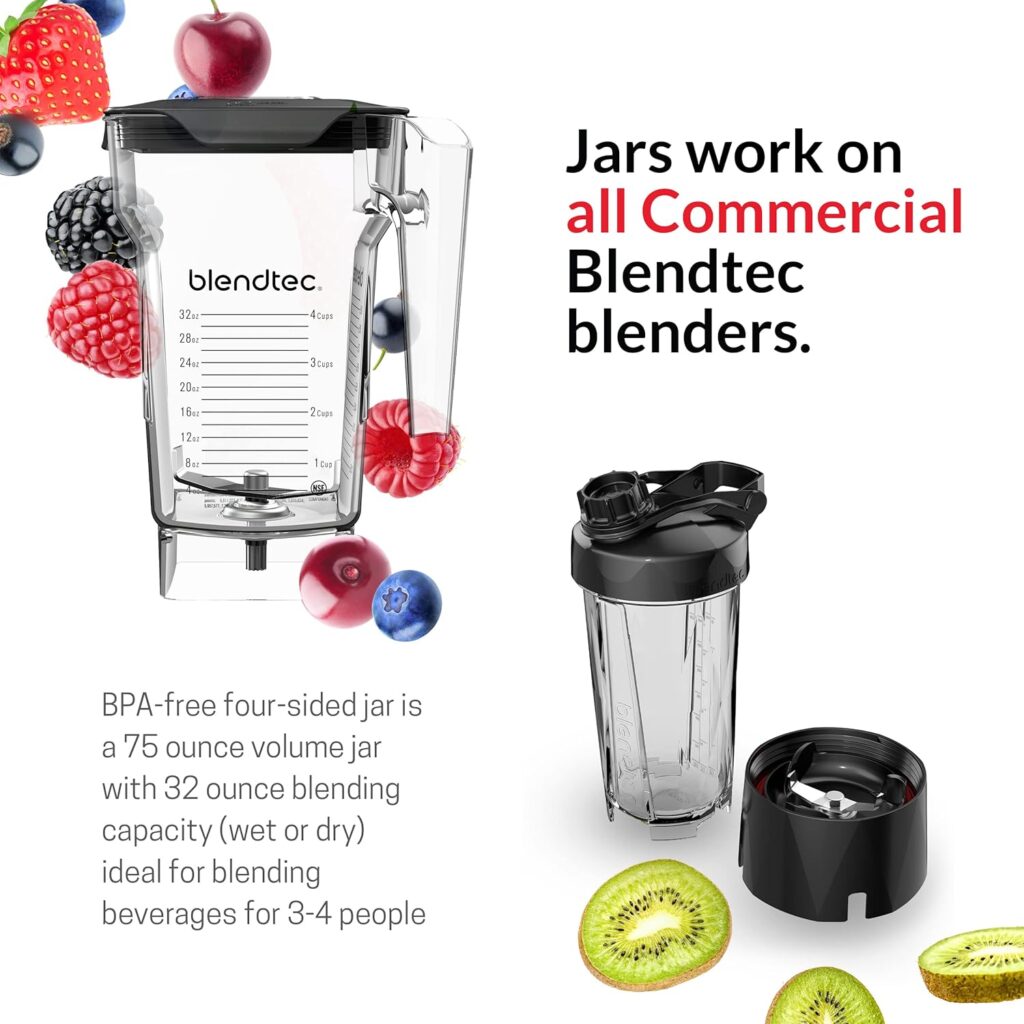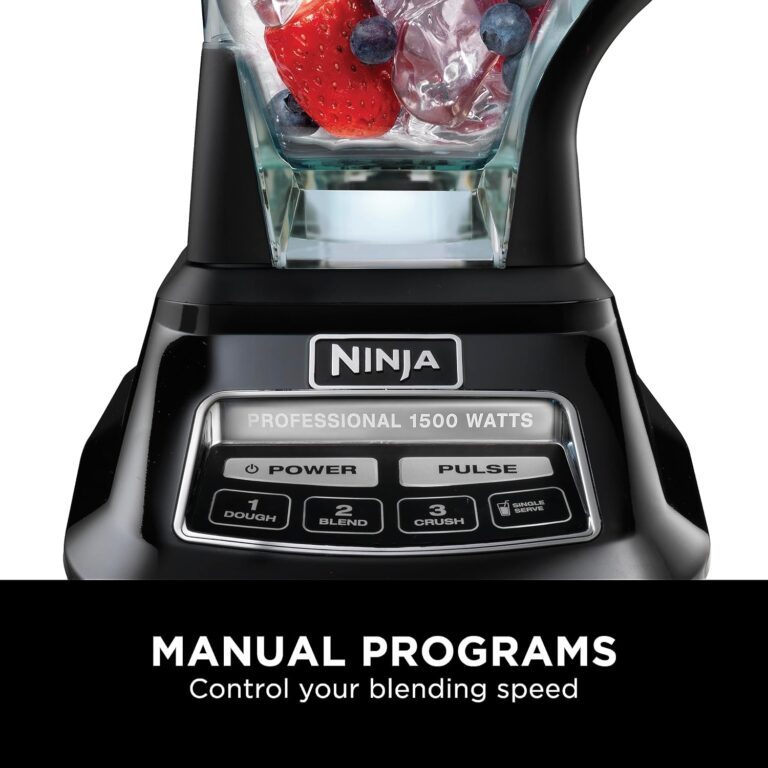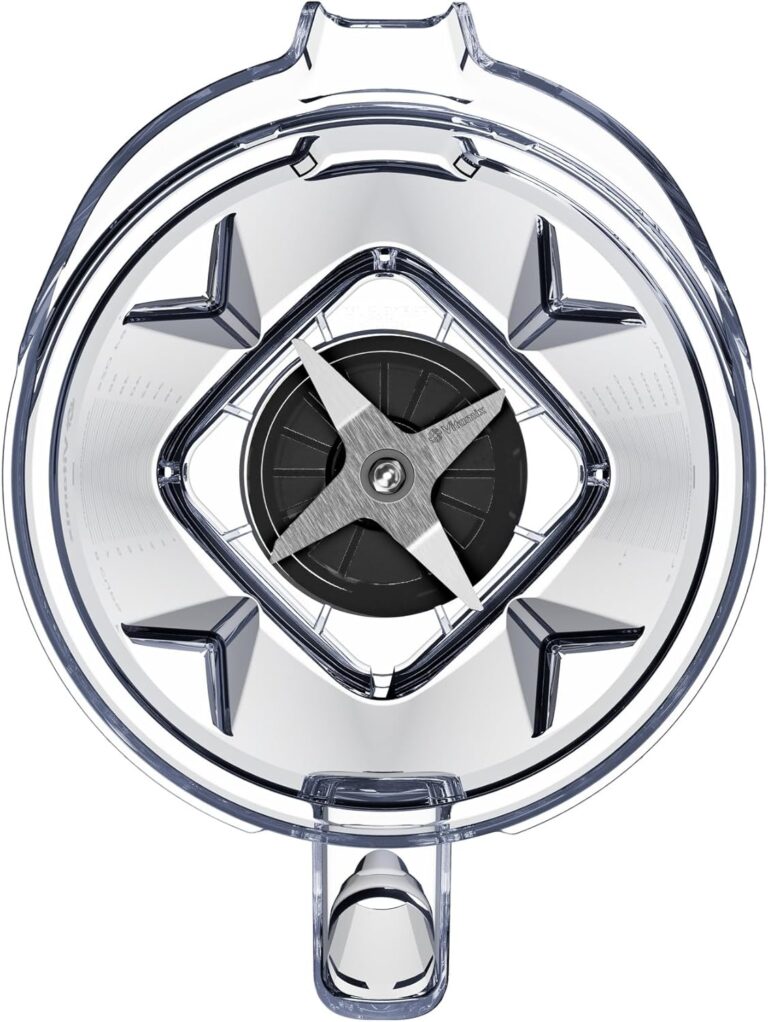
The Blendtec Total Classic Blender is a favorite among smoothie lovers, meal preppers, and power users who appreciate high-speed performance and simple controls. But even a powerful machine like this one needs regular maintenance to stay sharp, clean, and odor-free.
This guide walks you through every step of cleaning and maintaining your Blendtec — from daily rinsing to deep cleaning and motor base care. We’ve also added a maintenance checklist, common troubleshooting issues, and answers to questions Blendtec owners frequently ask. Whether you use it every morning or only on weekends, regular care can keep your blender blending like new for years.
Whether you use it every morning or only on weekends, regular care can keep your blender blending like new for years. For a full performance breakdown and user insights, check out our Blendtec Total Classic Blender review alongside our Blender Care Instructions for additional care tips across all blender models.
Daily Cleaning Routine
A quick clean after each use prevents gunk from building up and makes deep cleaning much easier.
Step-by-Step:
- Rinse the Jar – Immediately after use, fill it halfway with warm water.
- Add Soap – Add a small drop of dish soap.
- Blend – Run a manual blend or use the “Clean” button for 30 seconds.
- Rinse Again – Empty the jar and rinse with fresh water.
- Air Dry – Let the jar and lid dry upside down.
Cleaning immediately prevents sticky residues and discoloration, especially after blending dairy or protein powders.
Deep Cleaning the Jar and Lid
Every few weeks, your Blendtec deserves more than a quick rinse.
- Add 1 cup white vinegar + warm water until halfway full.
- Let soak for 15–30 minutes.
- Blend on high for 30 seconds.
- Scrub inside with a soft bottle brush.
- Rinse well and dry completely.
If your jar has a plastic handle, remove any food buildup underneath with a brush. For the lid, pull apart the silicone gasket (if applicable) and wash separately to prevent mold.
Blade Assembly Cleaning & Safety Tips
Blendtec blades are thick and blunt — and that’s by design. They don’t slice; they pulverize. Still, residue can collect underneath if you don’t rinse properly.
- Never use metal tools or sponges inside the jar.
- Use a soft bottle brush for the corners and under the blade hub.
- Soak overnight in warm water and mild soap to soften hard buildup.
- Rinse and inspect monthly for stuck debris or mineral layers.
Unlike other blenders, you don’t need to sharpen or replace the blade unless it’s physically damaged.
Motor Base Cleaning
The base houses the motor, electronics, and Blendtec’s patented touchpad or buttons. Keeping it clean avoids damage and keeps the controls responsive.
Do:
- Wipe the base with a slightly damp microfiber cloth.
- Clean between buttons and screen edges with a soft toothbrush.
- Dry immediately with a towel.
- Clean weekly if used often.
Don’t:
- Submerge or splash the base.
- Use harsh chemical cleaners.
- Let moisture sit in vents.
Cleaning the base helps avoid short circuits, sticky buttons, and long-term performance issues.
Stain & Odor Removal
Blended garlic, turmeric, or strong-flavored greens? Here’s how to handle lingering smells or stains:
- Fill jar halfway with warm water + ½ cup baking soda.
- Blend for 30 seconds.
- Let soak for 30–60 minutes.
- Rinse and follow up with a lemon-water blend if needed.
Avoid bleach or scouring powders — they can cloud the jar or leave residues.
Preventing Common Mistakes
Even high-end blenders suffer if not maintained correctly. Avoid these common mistakes:
- Blending dry ingredients with no liquid – Always use a bit of water or oil.
- Storing with the lid on – Traps moisture and leads to mildew.
- Dishwashing daily – Over time, this dulls the jar and weakens seals.
- Not cleaning gasket areas – Trapped food under the lid ring is a mold magnet.
Correcting these habits will protect your motor, seals, and flavor quality.
Monthly Maintenance Checklist
| Task | Frequency |
|---|---|
| Rinse & soap blend after use | Every use |
| Deep vinegar soak | Every 2 weeks |
| Baking soda deodorizing | Monthly |
| Scrub blade area | Monthly |
| Wipe motor base + buttons | Weekly |
| Check power cord | Monthly |
Set a reminder on your phone or calendar to knock this out in 15–20 minutes once a month.
The Science Behind Blendtec’s Blade System
Unlike traditional blenders that rely on razor-sharp blades to slice through ingredients, Blendtec uses blunt, cold-forged stainless steel blades. At first glance, this seems counterintuitive, but this unique design is actually one of the keys to Blendtec’s performance and safety.
The blades are 80% thicker than standard blender blades and have wingtip-style edges. Instead of cutting, they pulverize using sheer power and torque generated by Blendtec’s high-speed motor. This results in smoother textures without the risk of nicks or dulling that sharpened blades face over time.
From a cleaning perspective, these thick blades are easier and safer to scrub. There’s no risk of slicing your sponge (or fingers), which makes daily maintenance less intimidating for casual users.
More importantly, because they rely on torque rather than sharpness, build-up on the blade hub significantly affects performance. Even a thin layer of sticky residue can slow down the vortex or disrupt ingredient flow. That’s why it’s critical to clean beneath and around the blade housing consistently, especially if you’re blending thick ingredients like dates, nut butter, or protein powders.
Understanding how these blades work gives you a better sense of why proper care, including deep soaking, soft brushing, and inspecting for buildup, is essential for long-term performance.
Why Regular Cleaning Extends Blender Life
Most people think of blender cleaning as just a hygiene task. But when it comes to high-performance blenders like the Blendtec Total Classic, routine cleaning is actually a form of maintenance that directly impacts lifespan and blending power.
Here’s how:
- Reduces motor strain: Hardened residue on the blade hub or jar walls forces the motor to work harder than necessary. This adds strain and can eventually lead to overheating or wear on internal components.
- Prevents gasket wear: Uncleaned jars and lids can trap particles around seals. Over time, these tiny abrasives wear down the gasket, causing leaks or a loose lid fit.
- Improves blending performance: Clean blades maintain a smoother vortex, which evenly pulls ingredients toward the center. Residue disrupts this flow and leads to inconsistent textures.
- Protects taste and smell: Odors and flavors cling to the film or buildup. A poorly cleaned jar can make your next smoothie taste like the last soup you blended.
- Preserves aesthetics and clarity: Blendtec jars are known for their durable plastic, but consistent cleaning prevents fogging, discoloration, and etching that can dull the look of the container.
In short, your blender’s cleanliness is tied directly to its performance, longevity, and your experience using it. Users who clean thoroughly after each use — and perform monthly maintenance — report fewer issues and often get 10+ years of service from their Blendtec units.
Troubleshooting Guide
Problem: Cloudy Jar
Soak with vinegar, scrub gently, and avoid repeated dishwashing.
Problem: Burnt Smell from Base
May be overworked. Let cool for 30 minutes, and reduce the load next time.
Problem: Buttons Not Responding
Wipe screen area clean and dry. If still unresponsive, check for trapped moisture.
Problem: Blender Leaks
Ensure the jar is dry and the lid gasket is fully sealed. If persistent, inspect gasket wear.
Frequently Asked Questions
Can I put my Blendtec jar in the dishwasher?
Yes, the Blendtec jar is top-rack dishwasher safe, but handwashing is strongly recommended. Regular exposure to high heat, steam, and strong detergents in dishwashers can cloud the jar over time and may weaken the rubber gasket or cause warping. For the best long-term clarity and seal integrity, clean it using the self-clean blend method (warm water + dish soap + 30 seconds on medium) and let it air dry upside down.
How do I clean under the blades?
Because Blendtec blades are non-removable, it’s important to clean under and around the blade assembly thoroughly. The safest way is to soak the jar in warm, soapy water for 15–30 minutes, then use a long-handled soft bottle brush to reach under the blades. Avoid metal or abrasive sponges — they can scratch the plastic and reduce the jar’s lifespan. Regular cleaning prevents food buildup, which can cause odors or blending inefficiency.
Is the lid dishwasher-safe?
Yes, the lid is dishwasher-safe and can be placed on the top rack. However, the silicone gasket (if present) should be removed and hand-washed regularly. Food particles can get trapped under the seal, leading to mold or bad odors if ignored. After washing, allow both parts to dry fully before storage to prevent moisture from getting trapped between the layers.
Should I sharpen Blendtec blades?
No, you should never sharpen Blendtec blades. They are intentionally blunt and thick, designed to pulverize ingredients using high-speed motor torque, not cutting action. Attempting to sharpen them can damage the blade or alter its design, which may impact blending performance and void your warranty. If you notice a drop in blending power, it’s more likely due to residue buildup under the blade or wear on the drive socket, not dullness.
Can I blend ice or frozen fruit in my Blendtec Total Classic?
Yes, it’s designed to handle ice and frozen ingredients with ease. Just make sure you use the appropriate liquid ratio to avoid cavitation or motor strain. Use the “Ice Crush” or “Smoothie” cycle when available.
What should I do if my jar smells like onions or garlic even after cleaning?
Use the baking soda method: blend ½ cup baking soda and warm water for 30 seconds, let soak for 30 minutes, and rinse. Follow up with lemon or citrus water if the odor persists. You may need to remove and clean the gasket area thoroughly.
Can I leave blended drinks in the jar overnight?
It’s best not to. Leaving liquids inside can create staining, odor, or warping over time. Always pour out your blend, rinse, and air dry the jar. If you must store your mix, transfer it to a glass or BPA-free container.
How often should I replace the jar or blade?
Blendtec jars are built to last, but if you notice cracks, persistent cloudiness, or performance loss even after cleaning, it may be time for a new jar. Most users get several years of use before replacement. The blade is non-removable and doesn’t need sharpening or replacing under normal use.
Final Thoughts
A clean blender isn’t just about appearance — it directly affects your food’s taste, your blender’s performance, and how long the motor lasts.
By building in daily rinses, monthly deep cleans, and the occasional odor flush, you’ll keep your Blendtec Total Classic operating smoothly — and avoid problems like sticky blades, clouded jars, or burned-out motors.
Whether you’re blending smoothies every morning or prepping soups and sauces for the week, this maintenance guide gives you everything you need to protect your investment.
For a wider look at top-performing blenders, detailed comparison guides, and expert maintenance tips, browse our full blender review and care library.


